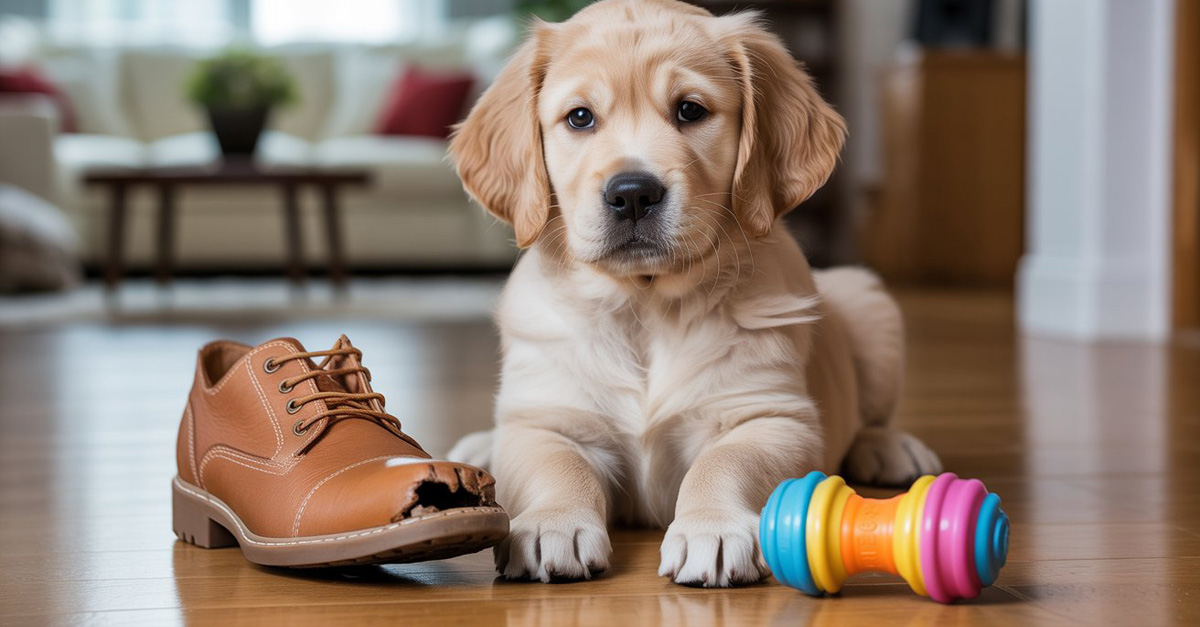Coming home to find your favorite pair of shoes shredded or the leg of a cherished piece of furniture gnawed into splinters is a uniquely frustrating experience for any dog owner. If you’re desperately trying to figure out how to stop a dog from chewing everything in sight, take a deep breath—you are not alone, and there is a solution. Destructive chewing is a natural canine behavior, but it’s one that can be managed and redirected with patience, consistency, and the right tools.
This complete guide will not focus on punishment, but on understanding the root cause of the chewing and providing positive, effective solutions that will build a better relationship with your dog and keep your belongings safe. By following these proven steps, you can successfully teach your dog what is acceptable to chew on and what is off-limits.
Table of Contents
Why Is My Canine Companion Chewing So Much?
Before you can solve the problem, it helps to understand why it’s happening. Yelling at your dog for chewing is like yelling at a baby for crying; it doesn’t address the underlying need. Dogs, and especially puppies, chew for several perfectly normal reasons:
- Puppy Teething: For puppies between three and six months old, chewing is a natural way to relieve the pain of new teeth coming in.
- Boredom or Excess Energy: A dog that is left alone for long periods without sufficient mental or physical stimulation will often invent its own “fun,” and chewing is a very entertaining activity for them.
- Anxiety or Stress: Chewing can be a self-soothing behavior for dogs who are anxious, especially those suffering from separation anxiety.
- Exploration: Particularly for puppies, chewing is a primary way they explore the world and learn about different textures and objects.
Understanding the ‘why’ is the first step if you truly want to stop a dog from chewing destructively.
5 Proven Steps to Stop a Dog from Chewing Destructively
The secret to success is not about stopping the chew, but redirecting it. You need to teach your dog a simple rule: “Don’t chew this, chew that instead.”
Step 1: Provide an Army of “Yes” Toys
The easiest way to stop a dog from chewing your valuables is to make it impossible for them to access them in the first place.
- Durable Rubber Toys: For powerful chewers, nothing beats a classic KONG Extreme Dog Toy. You can stuff them with treats or peanut butter to make them even more irresistible.
- Puzzle Toys: These toys provide crucial mental stimulation by making your dog work for their food. A Nina Ottosson Puzzle Feeder can keep a dog engaged and out of trouble for a significant amount of time.
- Dental Chews: These serve double duty by satisfying the urge to chew while also helping to clean your dog’s teeth.
Pro Tip: Rotate the toys. Don’t leave all of them out at once. Keeping a few hidden and swapping them out every few days makes them feel new and exciting.
Step 2: Make Forbidden Items Taste Awful
For persistent chewing on specific items like furniture legs or electrical cords, a taste deterrent is your best friend. A bitter apple spray is a safe, non-toxic product that tastes unpleasant to most dogs.
Simply spray a product like Grannick’s Bitter Apple Spray on the items you want your dog to avoid. One taste is usually enough to deter them from trying again. This is a humane way to create a negative association with the forbidden object.
Step 3: Manage the Environment Proactively
The easiest way to stop a dog from chewing your valuables is to make it impossible for them to access them in the first place. This is called “puppy-proofing” your home.
- Keep shoes, remote controls, and other tempting items out of reach.
- Use baby gates to block off rooms with valuable furniture when you cannot supervise your dog.
- Tidy up electrical cords and keep them hidden.
Remember, every time your dog successfully chews something they shouldn’t, it reinforces the bad habit. Management is prevention.
Step 4: A Tired Dog is a Good Dog
A common reason people fail when trying to stop a dog from chewing is that they overlook pent-up energy
- Physical Exercise: Daily walks, games of fetch, and runs in the park are essential.
- Mental Enrichment: Training sessions and using puzzle feeders for meals are great ways to work their brain. Using a portion of their kibble from the best dog food in India in a food puzzle can turn a 2-minute meal into a 20-minute engaging activity.
Step 5: Introduce a Safe “Den”
Crate training, when done correctly, is not a punishment. It provides your dog with a safe, comfortable space of their own—a den where they can relax and feel secure. It’s also an invaluable tool for preventing destructive chewing when you cannot supervise them. Make the crate a happy place with comfortable bedding and special toys they only get inside the crate. For more detailed guidance, trusted organizations like The Humane Society of the United States offer excellent step-by-step instructions.
Conclusion: Consistency is Key
UUltimately, the best way to stop a dog from chewing everything is through a patient combination of management, redirection, and enrichment. Be consistent in these methods, and praise your dog enthusiastically whenever you see them choosing to chew on an appropriate toy. This journey requires patience, but by implementing these positive reinforcement techniques, you are building a foundation of trust and good behavior that will last a lifetime.
Regular care is also part of the solution; a well-cared-for dog is often a well-behaved one. Ensure you’re providing for all their needs with the right supplies, from the best dog grooming kits to the most engaging toys. For a complete overview of everything your canine companion needs, be sure to check out our [ultimate guide to pet supplies]

